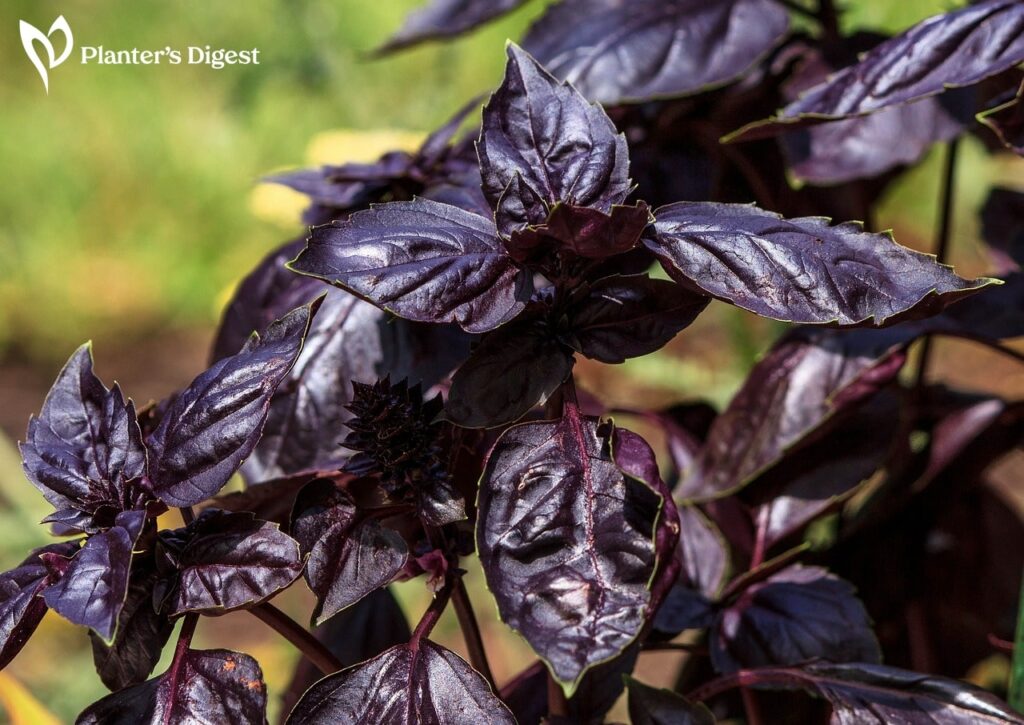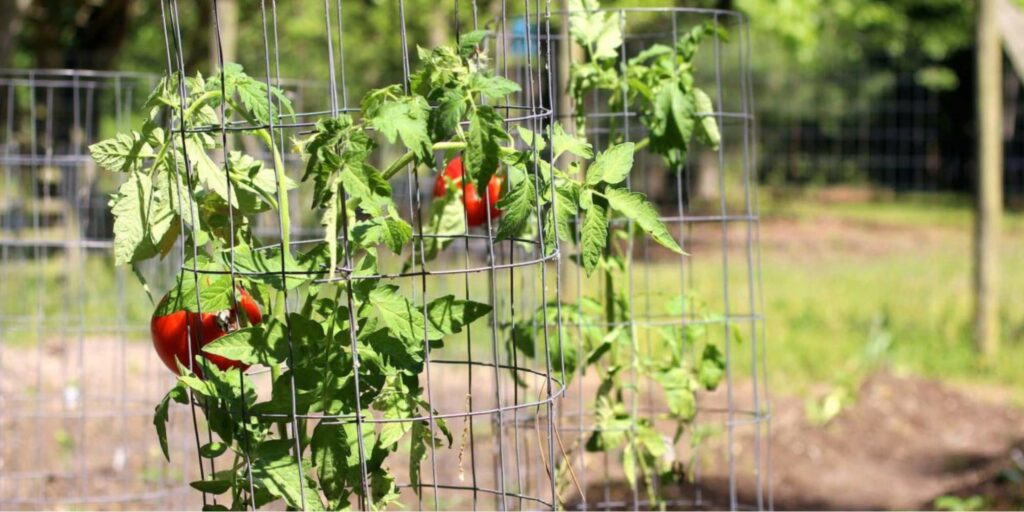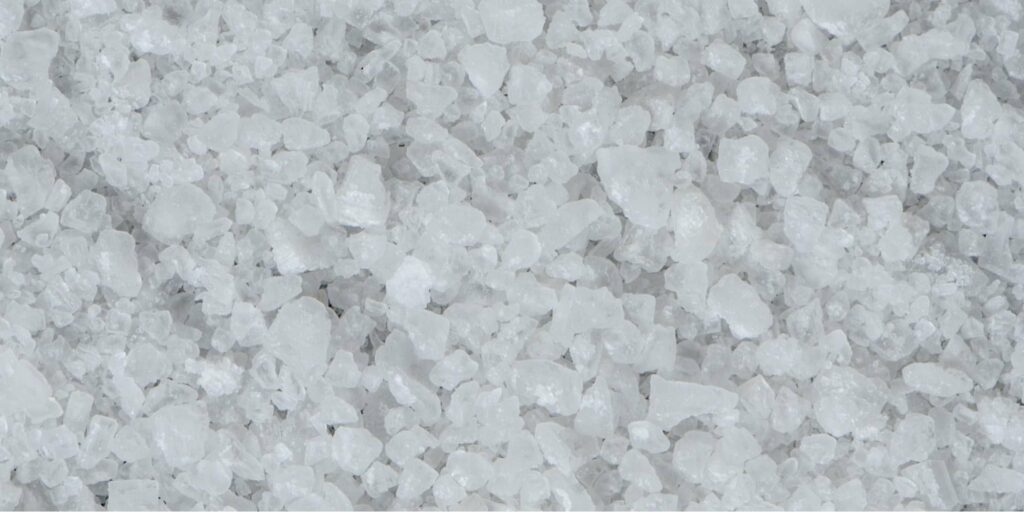Purple basil is a beautiful and flavorful herb, but what happens when it starts to turn green?
In this article, we’ll explore possible reasons for this color change and provide tips on how to keep your purple basil looking its best. Read on to learn more about why your purple basil might be turning green and how to fix it!
Why does purple basil turn green?
Purple basil turns green because of lack of light, genetics and hybrid variety.
Let’s discuss how each cause makes purple basil turn to green.
1. Lack of Light
The unique purple color of this basil comes from the presence of a pigment called anthocyanin.
Basil plants naturally produce anthocyanin in response to external stress conditions like drought, UV-B, heavy metals, and resistance to herbivores and pathogens.
So, if the basil plant’s anthocyanin production is low, the chlorophyll, which is always present in plants, will dominate and make your purple basil turn green.
The good news is that your purple basil will retain its deep purple color as long as the plant is exposed to a good amount of light.
This is also why purple basil likely loses its color in autumn and winter because of the lack of sunlight during these months. On the other hand, you’ll see the rich purple dominating your basil leaves during the summer months.
2. Pigment Inheritance
Studies found that the inheritance of the purple pigment anthocyanin can be unstable in some basil varieties. So, if you bought purple basil seeds, it’s likely that the basil plant will grow from seeds that can have purple and green leaves.
So, how do you know if it’s a lack of light or a genetic problem? It’s genetic when some leaves are likely to present purple and green patches on them, but it’s a lack of light when most leaves gradually fade away in color from purple to green.
3. Hybrid Variety
Some basil types present purple and green colors in the plant’s leaves, stems or both. These basil species include the Anise, Licorice, Purple Bush, and Tulsi or Sacred varieties.
Hybrid basil varieties are created by crossing two or more different types of basil. In this case, some hybrid basil varieties have unique leaf colors, such as purple and green.
For example, if one parent plant has purple leaves and the other has green leaves, the hybrid offspring may have a mix of both colors.
How to Maintain Your Basils’ Purple Shade
Maintain your basil’s purple shade by changing the plant location or using grow lights so you can enjoy its purple leaves all season long.
Learn how these gardening techniques will help keep your basil purple.
1. Change the basil plant location.
Due to its striking purple color, you might have placed your basil plant in the middle of the room, on a table, or far from a natural light source. However, placing your purple basil close to a window or direct sunlight will help it get plenty of light.
Location plays a vital role in keeping basil purple because it affects the amount of sunlight and heat the plant receives. Purple basil needs full sun to produce and maintain its vibrant color.
It also needs warm temperatures, ideally between 60 and 80 degrees Fahrenheit. If the plant does not receive enough sunlight or heat, it will start producing more chlorophyll, giving the leaves a green color.
2. Use grow lights.
Grow lights can help keep basil purple by providing the plant with the supplemental light it needs to produce anthocyanins, the pigments that give basil its purple color.
Basil needs at least six hours of full sun daily, but if you can provide less natural light, grow lights can help fill the gap.
When choosing grow lights for basil, look for lights that emit a full spectrum of light, especially red, because it’s for promoting anthocyanin production.
Additionally, you can also use grow lights to extend the day length for your basil plants and keep them producing leaves all year.
Types of Purple Basil
Purple basil is a common commercial basil cultivar. This means that purple basil includes many basil types, and we’ve listed the most common varieties in the table below.
| Purple Basil Variety | Height | Features |
| Amethyst Basil | 12-18 inches | Deep purple leaves with a sweet, anise flavor. |
| Dark Opal | 18-24 inches | Large, dark purple leaves with a strong basil flavor. |
| Red Rubin | 12-18 inches | Compact plants with purple-red leaves and a sweet basil flavor. |
| Holy Sacred Red | 18-24 inches | Vigorous plants with purple-red leaves and a strong basil flavor. |
| Osmin Purple | 12-18 inches | Bushy plants with purple leaves and a strong basil flavor. |
| Purple Ruffle | 12-18 inches | Compact plants with ruffled purple leaves and a mild basil flavor. |
| Red Rubin Purple Leaf | 12-18 inches | Compact plants with purple-red leaves and a sweet basil flavor. |
FAQs on Purple Basil Turning Green
Purple basil that has turned green will still taste good. It has a stronger, more peppery flavor than purple basil.
Purple basil has antioxidants in the form of anthocyanins, which is the pigment responsible for the plant’s purple color.
Purple basil can be used to make vinegar, which has a beautiful purple color and a unique flavor.
Purple basil starts as green because as the plant matures, it produces anthocyanins, which give it its purple color.
A green layer on your soil means too much water and encourages algae growth. Algae can grow in moist environments and can be prevented by allowing the basil plant enough sunlight and ensuring the soil is well-draining.





